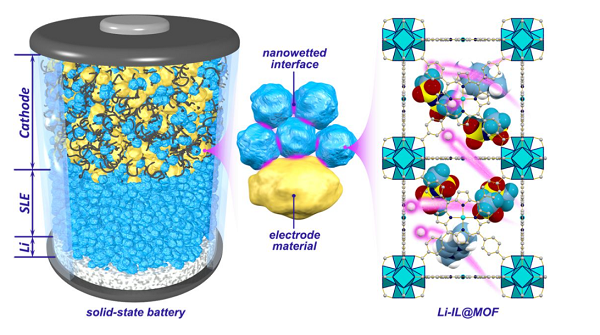Lithium battery electrolyte is generally composed of lithium salt and organic solvent. The electrolyte plays the role of conducting ions between the positive and negative electrodes of the lithium battery, which is the guarantee for the lithium ion battery to obtain the advantages of high voltage and high specific energy. The electrolyte is generally prepared from high-purity organic solvents, electrolyte lithium salts, necessary additives and other raw materials under certain conditions and in a certain proportion.

The important components of lithium-ion battery electrolyte are as follows:
1. Ethylene carbonate: Molecular formula: C3H4O3, transparent and colorless liquid (>35℃), crystalline solid at room temperature, a good solvent for polyacrylonitrile and polyvinyl chloride.
2. Propylene carbonate, colorless and odorless, or light yellow transparent liquid, soluble in water and carbon tetrachloride, miscible with ether, acetone, benzene, etc. This product should be stored in a cool, ventilated and dry place, away from fire sources, and stored and transported in accordance with general low-toxicity chemical regulations.
3. Diethyl carbonate, colorless liquid, slightly odorous; vapor pressure 1.33kPa/23.8℃; flash point 25℃, flammable liquid can volatilize into vapor and run into the air.
4. Dimethyl carbonate is a non-toxic, environmentally friendly and widely used chemical raw material; it also has a higher evaporation temperature and a faster evaporation rate.
5. Ethyl methyl carbonate, colorless and transparent liquid, is a high-tech, high value-added chemical product emerging in recent years, an excellent solvent for lithium-ion battery electrolyte, this product should be stored in a cool, ventilated and dry place , according to the regulations for storage and transportation of flammable chemicals.
6. Lithium hexafluorophosphate, white crystal or powder, deliquescence decomposes in the air or when heated, Lithium hexafluorophosphate decomposes rapidly in the air due to the use of water vapor when exposed to the air or when heated, and emits PF5 and white smoke appears.
Precautions when using lithium battery electrolyte
1. The electrolyte tank is protected by argon gas and has a certain pressure. Do not disassemble the gas phase valve head and the liquid phase valve head during use, and do not press the convex head of the quick-opening joint at will to avoid leakage or other dangers. Be sure to wear protective goggles when taking over, and be sure to use special quick-release joints when using.
2. It is recommended to use up the lithium-ion battery electrolyte that has passed the test at one time. The opened electrolyte is easily deteriorated due to the absence of atmosphere protection. Please pay attention to filling the argon gas protection in time during use to prevent discoloration of the electrolyte. It is recommended to use glassware for storage. The important component of glass is silicon oxide. The reaction between silicon oxide and hydrofluoric acid produces silicon tetrafluoride, a corrosive and volatile gas. This gas is poisonous and will cause harm to people.
3. The electrolyte container and pipeline materials that can be used on site include: stainless steel, plastic PP/PE, tetrafluoroethylene, etc.
4. This product is harmful to the human body and has mild stimulation and anesthetic purposes. Avoid direct contact with the body during use.
The product quality of lithium-ion battery electrolyte is constantly improving and improving, and its market development prospect is still very broad. Although the ionic conductivity of solid-state electrolytes at this stage cannot match that of carbonate-based liquid electrolytes, solid-state electrolytes are still one of the mainstream research and development directions for lithium-ion battery electrolytes in the future.


